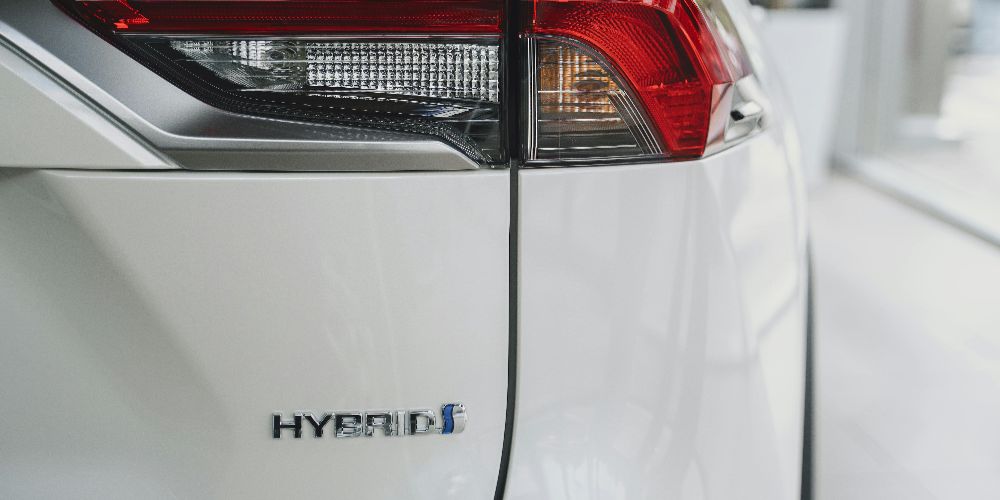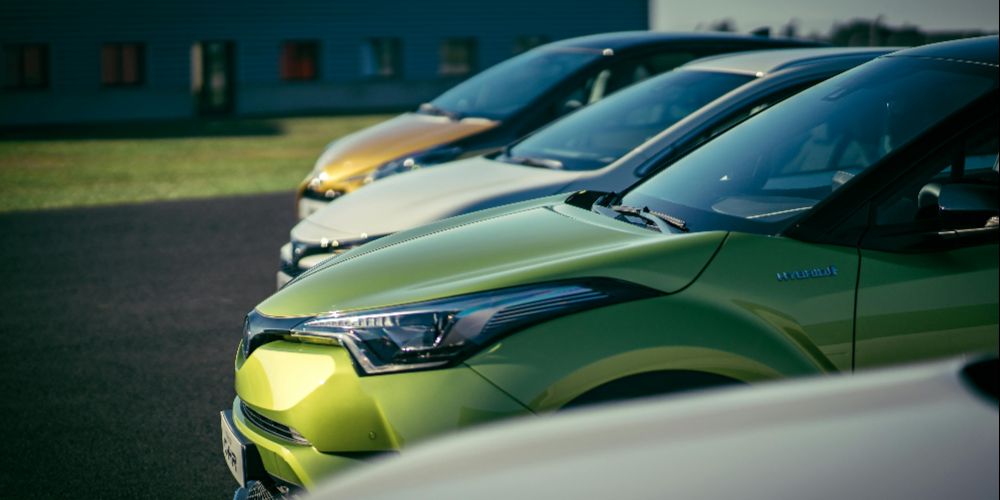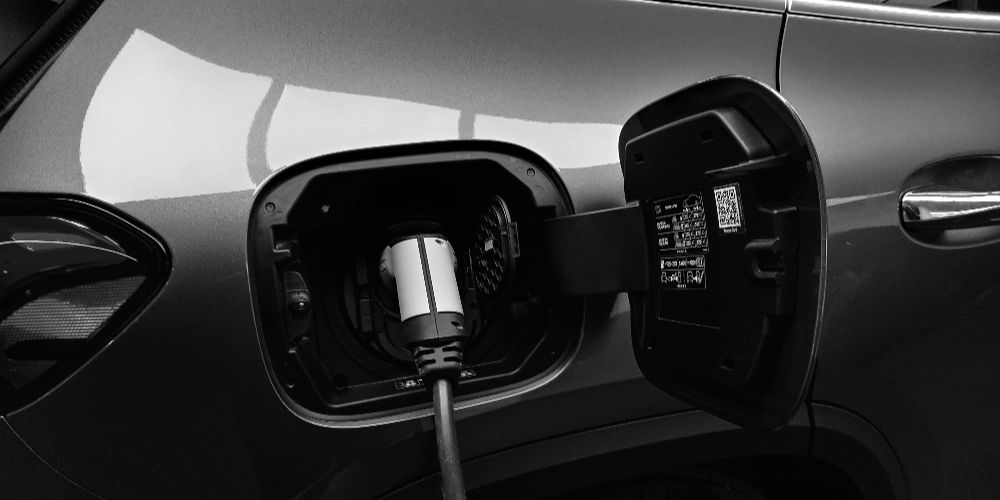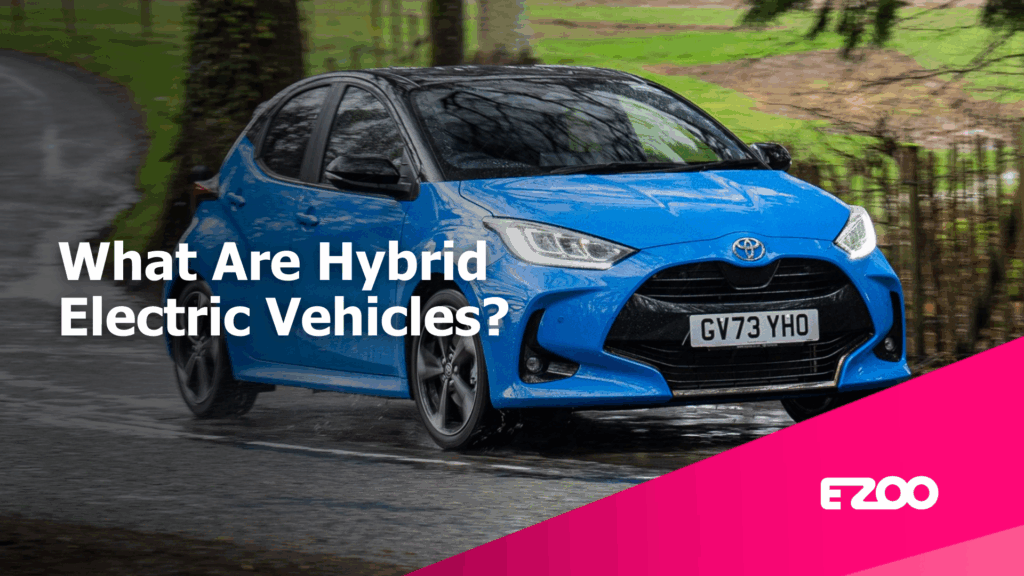With the UK government phasing out new petrol and diesel cars by 2035 and businesses increasingly focused on sustainability, hybrid electric vehicles (HEVs) have entered the spotlight.
Hybrid vehicles offer a stepping stone between traditional combustion engines and fully electric vehicles (EVs) – but what exactly are they?
This guide will explain everything you need to know about hybrid electric vehicles, including how they work, the different types, tax implications, and whether they make sense for your business.
What Is a Hybrid Electric Vehicle?
A hybrid electric vehicle combines a petrol (or diesel) engine with an electric motor and a battery.
Unlike fully electric cars (which rely entirely on electricity), hybrids use both systems to power the car- sometimes separately, sometimes in tandem.
The key idea? Better fuel efficiency and lower emissions than standard combustion vehicles, without relying solely on charging infrastructure.
Types of Hybrid Vehicles
- Mild Hybrid Electric Vehicle (MHEV): Small battery assists engine – can’t drive in electric-only mode. Charges automatically via driving. Example: Ford Puma Hybrid.
- Full Hybrid Electric Vehicle (FHEV): Can drive short distances on electric power, switches between engine, electric, or both. Self-charging. Example: Toyota Yaris Hybrid.
- Plug-In Hybrid Electric Vehicle (PHEV): Larger battery allows 20–40 mile electric-only range and requires external charging. Offers the best mix for electric suburb driving and long motorway trips. Example: Volvo XC60 Recharge.

How Do Hybrids Work?
Their operation varies by type but generally:
- Low speeds or idle = electric motor alone
- High speeds = engine engaged
- Regenerative braking helps recharge the battery
- PHEVs plugged in for full electric range
This dual system reduces fuel use and emissions, especially in urban and stop-start driving.
How They Perform in the Real World
While hybrids promise a balance between electric efficiency and traditional convenience, real-world results depend heavily on driving habits and usage:
- Urban driving: Hybrids shine here. Frequent braking and low speeds favour electric power and regenerative braking, improving efficiency.
- Motorway driving: The combustion engine does most of the work, especially in mild and full hybrids, reducing the fuel-saving advantage.
- Plug-in hybrids: These are only cost-effective if regularly charged. Drivers who skip charging often see fuel economy drop below manufacturer claims.
Servicing and Maintenance Costs
Hybrids generally require less frequent maintenance than traditional petrol or diesel cars, especially if driving involves a lot of electric-only miles. Benefits include:
- Reduced brake wear due to regenerative braking
- Less wear and tear on the engine
- Fewer oil changes (especially in PHEVs and FHEVs)
However, repairs can be more complex and costly when issues do arise – especially if specialist parts or high-voltage battery diagnostics are needed. That makes warranty coverage and bundled servicing especially valuable for business users.

Are Hybrids Considered Electric Vehicles?
They’re electrified, but not fully electric. Only BEVs (battery electric vehicles) run entirely on electric power. Hybrids still use fossil fuels and fall into different tax and regulatory brackets. PHEVs may receive some low-emission incentives, but BiK tax rates are higher than for BEVs.
Future-Proofing: Resale and Legislation Risks
Looking ahead, hybrids may face tighter scrutiny:
- The 2035 ban on petrol and diesel includes most hybrids, unless they can travel a “significant” distance with zero emissions
- PHEVs that don’t deliver in real-world testing may face tax penalties or lose incentives
- As BEV adoption grows, hybrid resale values may drop, particularly for low-range models
Fleet managers and HR leaders should weigh these factors when planning vehicle policy. While hybrids may serve a purpose now, the future is electric – and businesses that lead the transition will benefit most.

Updated BiK Rates for 2025/26
Here’s how HMRC treats company car benefit-in-kind (BiK) for the 2025/26 tax year:
| Vehicle Type | CO₂ Emissions | Electric Range | BiK Rate 2025/26 |
| BEV | 0 g/km | N/A | 3% |
| PHEV | 1–50 g/km | >130 miles | 3% |
| PHEV | 1–50 g/km | 70–129 miles | 6% |
| PHEV | 1–50 g/km | 40–69 miles | 9% |
| PHEV | 1–50 g/km | 30–39 miles | 13% |
| PHEV | 1–50 g/km | <30 miles | 15% |
| Petrol/Diesel | 51‑… g/km | – | 16–37% depending on CO₂ |
BiK for fully electric cars will gradually increase to 5% by 2027/28.
Hybrid Cars and Salary Sacrifice
Many salary sacrifice schemes still include hybrid vehicles, but EVs offer the biggest savings, making hybrids less attractive financially. Fully electric remains the favoured choice for salary sacrifice and electric car lease deals with EZOO offerings.
Hybrids offer a transitionary option – lower emissions than petrol/diesel but not as cost-efficient or green as EVs. For maximum tax savings, emission reduction, and simplicity, fully electric is the superior choice.

